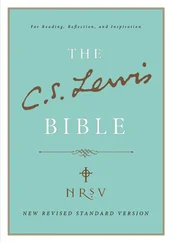Standard Template Library Programmer's Guide
Здесь есть возможность читать онлайн «Standard Template Library Programmer's Guide» весь текст электронной книги совершенно бесплатно (целиком полную версию без сокращений). В некоторых случаях можно слушать аудио, скачать через торрент в формате fb2 и присутствует краткое содержание. Жанр: Программирование, Справочники, на английском языке. Описание произведения, (предисловие) а так же отзывы посетителей доступны на портале библиотеки ЛибКат.
- Название:Standard Template Library Programmer's Guide
- Автор:
- Жанр:
- Год:неизвестен
- ISBN:нет данных
- Рейтинг книги:4 / 5. Голосов: 1
-
Избранное:Добавить в избранное
- Отзывы:
-
Ваша оценка:
- 80
- 1
- 2
- 3
- 4
- 5
Standard Template Library Programmer's Guide: краткое содержание, описание и аннотация
Предлагаем к чтению аннотацию, описание, краткое содержание или предисловие (зависит от того, что написал сам автор книги «Standard Template Library Programmer's Guide»). Если вы не нашли необходимую информацию о книге — напишите в комментариях, мы постараемся отыскать её.
Standard Template Library Programmer's Guide — читать онлайн бесплатно полную книгу (весь текст) целиком
Ниже представлен текст книги, разбитый по страницам. Система сохранения места последней прочитанной страницы, позволяет с удобством читать онлайн бесплатно книгу «Standard Template Library Programmer's Guide», без необходимости каждый раз заново искать на чём Вы остановились. Поставьте закладку, и сможете в любой момент перейти на страницу, на которой закончили чтение.
Интервал:
Закладка:
| Name | Expression | Return type |
|---|---|---|
| Default constructor | X() X a; |
|
| Constructor with compare | X(c) X a(c); |
|
| Key comparison | a.key_comp() |
X::key_compare |
| Value comparison | a::value_compare() |
X::value_compare |
| Lower bound | a.lower_bound(k) |
iterator if a is mutable, otherwise const_iterator . |
| Upper bound | a.upper_bound(k) |
iterator if a is mutable, otherwise const_iterator . |
| Equal range | a.equal_range(k) |
pair if a is mutable, otherwise pair . |
| Name | Expression | Semantics | Postcondition |
|---|---|---|---|
| Default constructor | X() X a; |
Creates an empty container, using key_compare() as the comparison object. | The size of the container is 0 . |
| Constructor with compare | X(c) X a(c); |
Creates an empty container, using c as the comparison object. | The size of the container is 0 . key_comp() returns a function object that is equivalent to c . |
| Key comparison | a.key_comp() |
Returns the key comparison object used by a . | |
| Value comparison | a::value_compare() |
Returns the value comparison object used by a . | If t1 and t2 are objects of type value_type , and k1 and k2 are the keys associated with them, then a.value_comp()(t1, t2) is equivalent to a.key_comp()(k1, k2) . |
| Lower bound | a.lower_bound(k) |
Returns an iterator pointing to the first element whose key is not less than k . Returns a.end() if no such element exists. | If a contains any elements that have the same key as k , then the return value of lower_bound points to the first such element. |
| Upper bound | a.upper_bound(k) |
Returns an iterator pointing to the first element whose key is greater than k . | Returns a.end() if no such element exists. If a contains any elements that have the same key as k , then the return value of upper_bound points to one past the last such element. |
| Equal range | a.equal_range(k) |
Returns a pair whose first element is a.lower_bound(k) and whose second element is a.upper_bound(k) . |
key_comp() and value_comp() are constant time.
Erase element is constant time.
Erase key is O(log(size()) + count(k)) . [1]
Erase range is O(log(size()) + N) , where N is the length of the range. [1]
Find is logarithmic. [1]
Count is O(log(size()) + count(k)) . [1]
Lower bound, upper bound, and equal range are logarithmic. [1]
| Definition of value_comp | If t1 and t2 are objects of type X::value_type and k1 and k2 are the keys associated with those objects, then a.value_comp() returns a function object such that a.value_comp()(t1, t2) is equivalent to a.key_comp()(k1, k2) . |
| Ascending order | The elements in a Sorted Associative Container are always arranged in ascending order by key. That is, if a is a Sorted Associative Container, then is_sorted(a.begin(), a.end(), a.value_comp()) is always true . |
• set
• multiset
• map
• multimap
[1] This is a much stronger guarantee than the one provided by Associative Container. The guarantees in Associative Container only apply to average complexity; worst case complexity is allowed to be greater. Sorted Associative Container, however, provides an upper limit on worst case complexity.
[2] This definition is consistent with the semantics described in Associative Container. It is a stronger condition, though: if a contains no elements with the key k , then a.equal_range(k) returns an empty range that indicates the position where those elements would be if they did exist. The Associative Container requirements, however, merely state that the return value is an arbitrary empty range.
Associative Container, Hashed Associative Container
Hashed Associative Container
Category: containers
Component type: concept
A Hashed Associative Container is an Associative Container whose implementation is a hash table. [1] The elements of a Hashed Associative Container are not guaranteed to be in any meaningful order; in particular, they are not sorted. The worst case complexity of most operations on Hashed Associative Containers is linear in the size of the container, but the average case complexity is constant time; this means that for applications where values are simply stored and retrieved, and where ordering is unimportant, Hashed Associative Containers are usually much faster than Sorted Associative Containers.
Associative Container
The following new types are introduced, in addition to the types defined in the Associative Container requirements.
| Hash function | X::hasher |
A type that is a model of Hash Function. X::hasher 's argument type must be X::key_type . |
| Key equal | X::key_equal |
A Binary Predicate whose argument type is X::key_type . An object of type key_equal returns true if its arguments are the same key, and false otherwise. X::key_equal must be an equivalence relation. |
XA type that is a model of Hashed Associative Container
aObject of type X
tObject of type X::value_type
kObject of type X::key_type
p, qObject of type X::iterator
nObject of type X::size_type
hObject of type X::hasher
cObject of type X::key_equal
A hash function for a Hashed Associative Container X is a Unary Function whose argument type is X::key_type and whose return type is size_t . A hash function must be deterministic (that is, it must always return the same value whenever it is called with the same argument), but return values of the hash function should be as uniform as possible: ideally, no two keys will hash to the same value. [2]
Elements in a Hashed Associative Container are organized into buckets . A Hashed Associative Container uses the value of the hash function to determine which bucket an element is assigned to.
The number of elements in a Hashed Associative Container divided by the number of buckets is called the load factor . A Hashed Associative Container with a small load factor is faster than one with a large load factor.
Читать дальшеИнтервал:
Закладка:
Похожие книги на «Standard Template Library Programmer's Guide»
Представляем Вашему вниманию похожие книги на «Standard Template Library Programmer's Guide» списком для выбора. Мы отобрали схожую по названию и смыслу литературу в надежде предоставить читателям больше вариантов отыскать новые, интересные, ещё непрочитанные произведения.
Обсуждение, отзывы о книге «Standard Template Library Programmer's Guide» и просто собственные мнения читателей. Оставьте ваши комментарии, напишите, что Вы думаете о произведении, его смысле или главных героях. Укажите что конкретно понравилось, а что нет, и почему Вы так считаете.











